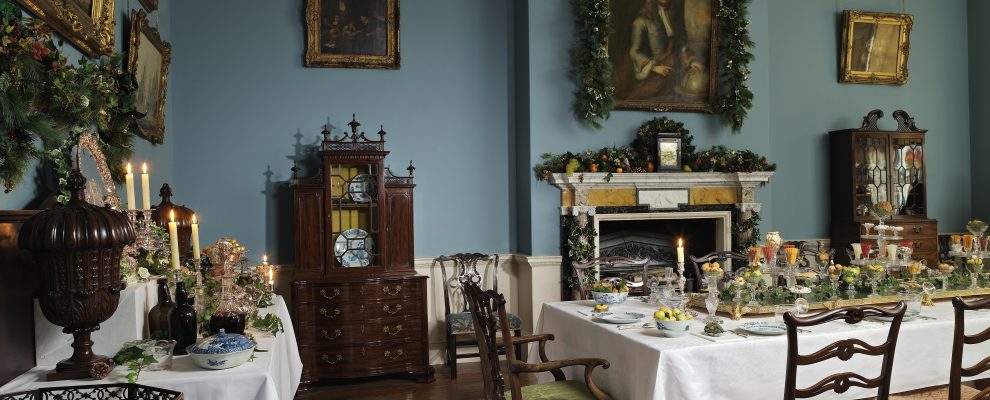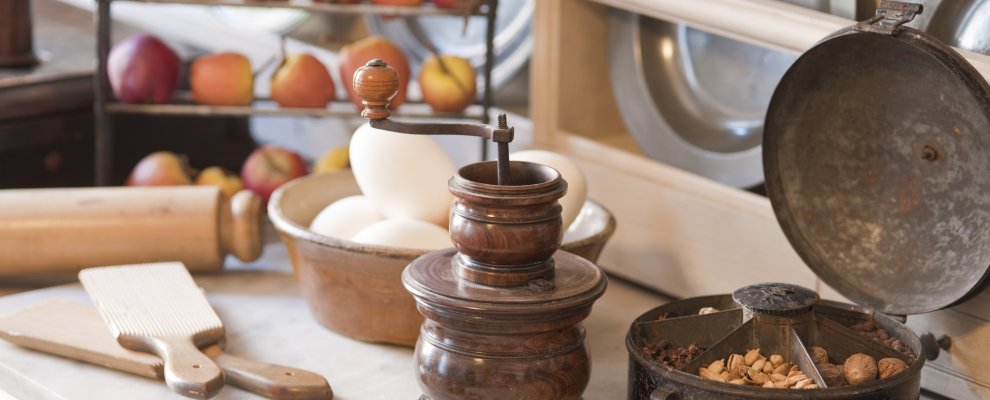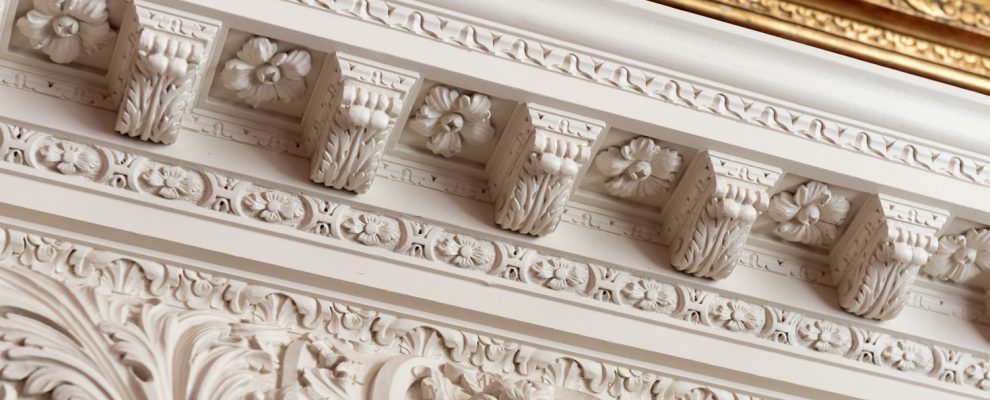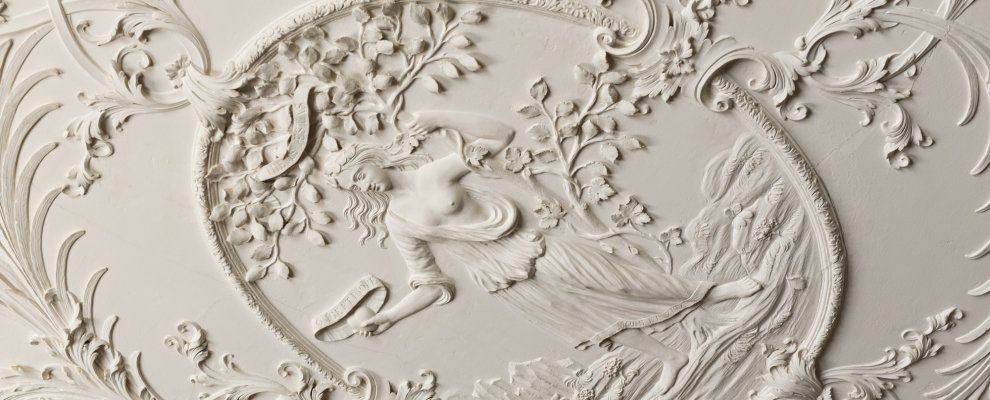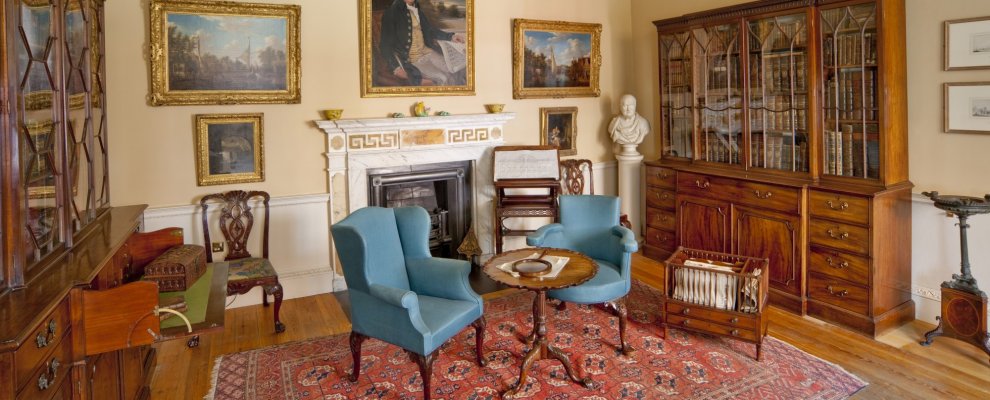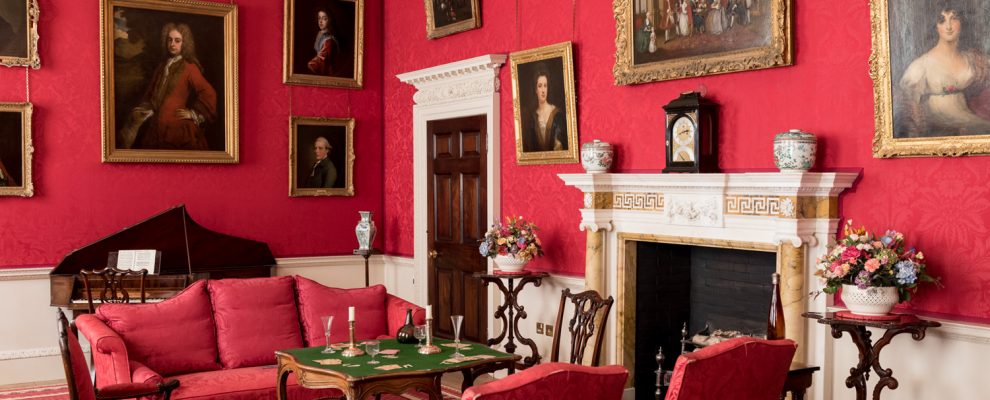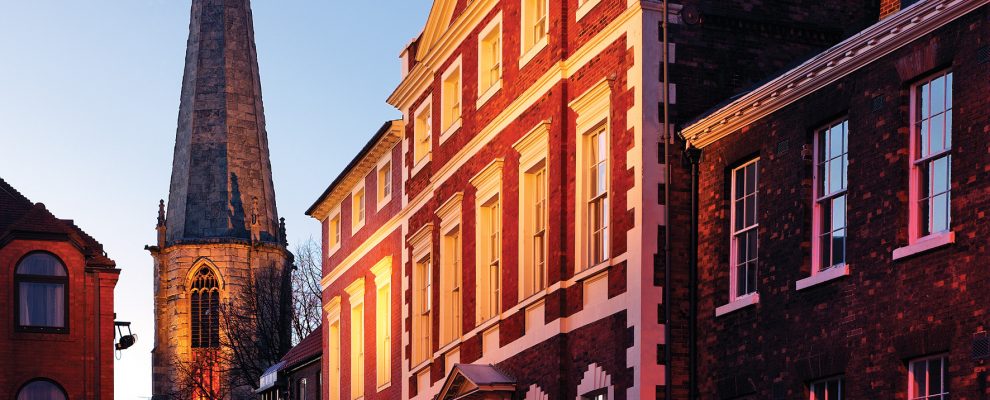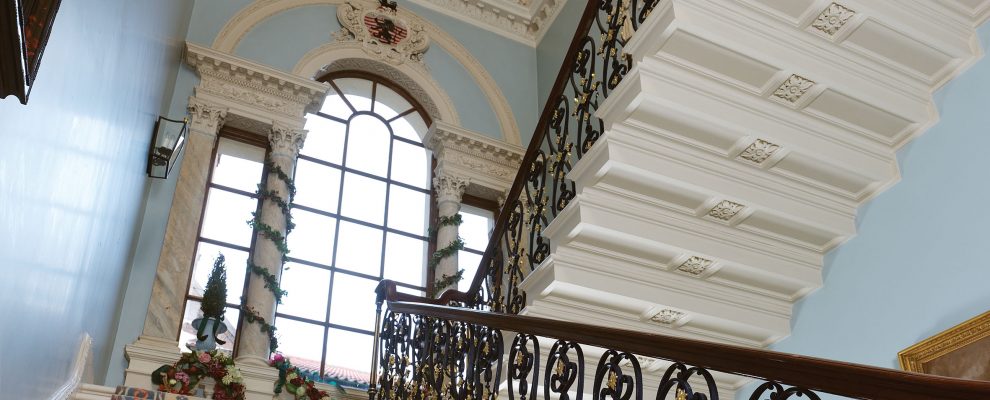Master Craftsmen
Fairfax House is a testament to the combined talents of the architect and craftsmen who executed his designs. Master stuccoist, Giuseppe Cortese, is believed to have been responsible for the main decorative plasterwork in the house.
Found through each of the public reception rooms in the house, the elaborate and exquisite stucco scheme marks the house out as an architectural masterpiece, for which it is now widely celebrated. Maurice Tobin of Leeds produced exquisitely wrought iron work for the balustrading of the main and back staircases as well as iron railings and double gates at the front of the house, while the exceptional, ornately-carved woodwork was the hand of master carver Daniel Shillito.
Local suppliers were also used to furnish the house and the Viscount relied on the Reynoldson’s, a catholic family firm of upholsterers, to provide the soft furnishings, wall coverings and decorative scheme throughout for example hanging a Mock India paper in Anne’s bedroom, covering one settee with scrolled feet, two armchairs and eight ‘mahogone’ chairs with fluted feet in damask.
The Viscount spent a total of £10,000 on purchasing, remodelling and then decorating the townhouse. Such was the investment into this that Lord Fairfax complained to his London lawyer, Anthony Wright that ‘my Daughter (sic) house, which is just finished and paid for, drains me of all my money’. Nevertheless, the result was magnificent, brimming with decorative flourishes, stucco ceilings and reliefs, intricate wood carvings and wrought ironwork, and culminating with the magnificent Great Staircase and exquisite Venetian Window.

